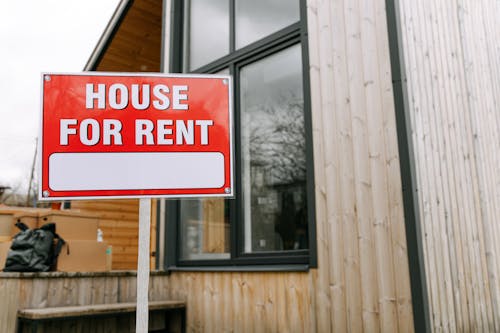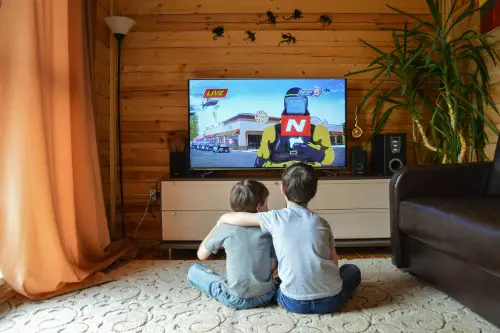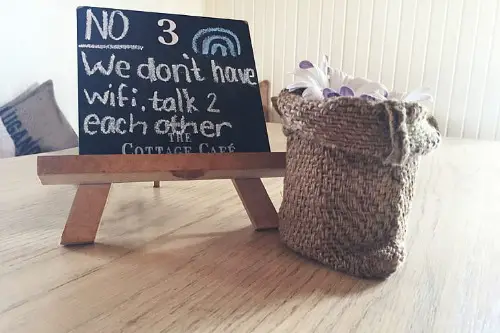1. Swapping Social Media for Group Chats

Public posting is out—private messaging is in. More Americans are ditching the pressure of curated feeds and turning to group chats, Discord servers, and close-friends lists. It’s more intimate, less performative, and feels safer in a world of algorithm fatigue. People still want to connect—they just don’t want to broadcast.
This shift is happening quietly, but it’s reshaping how people socialize online. Instead of chasing likes, users are prioritizing real conversations with smaller circles. It’s a return to digital closeness, without the noise. And it’s changing the vibe of the internet.
2. Using AI as a Daily Assistant

AI isn’t just for techies anymore—it’s become a casual part of everyday life. From writing emails to planning meals to summarizing news, Americans are using AI tools like they once used search engines. It’s not flashy, just practical. And most people don’t even realize how often they’re relying on it.
This quiet integration is changing how people work, learn, and even parent. AI is helping with homework, budgeting, and scheduling in ways that feel natural. It’s not about replacing humans—it’s about offloading the mental clutter. And it’s happening faster than most realize.
3. Renting Instead of Owning—By Choice

Homeownership used to be the American dream, but in 2025, more people are choosing to rent long-term. It’s not just about affordability—it’s about flexibility. With remote work and rising mobility, locking into a 30-year mortgage feels limiting. Renting offers freedom, and for many, that’s worth more than equity.
This shift is especially strong among younger Americans and digital nomads. They’re prioritizing lifestyle over property lines. And while the housing market still dominates headlines, the quiet normalization of renting is changing the definition of “settling down.” It’s a cultural pivot that’s easy to miss.
4. Eating Less Meat Without Going Full Vegan

Americans aren’t necessarily going vegetarian—but they are cutting back on meat. Whether it’s for health, cost, or climate reasons, “flexitarian” eating is on the rise. Plant-based meals are becoming the norm a few days a week. And no one’s making a big deal about it.
This isn’t about labels—it’s about habits. Grocery carts now include more lentils, tofu, and oat milk without fanfare. Fast food chains are offering meatless options as standard, not novelty. It’s a quiet but powerful shift in how the country eats.
5. Embracing Secondhand Everything

Thrifting isn’t just trendy—it’s practical. Americans are buying used clothes, furniture, and even electronics more than ever before. It’s driven by inflation, sustainability, and a growing love for vintage style. And it’s changing how people shop.
Apps like Poshmark, Facebook Marketplace, and Buy Nothing groups are booming. People are proud of their secondhand finds, not embarrassed. The stigma around “used” is fading fast. And it’s reshaping consumer culture from the ground up.
6. Taking Mental Health Days Without Apology

Mental health is no longer a taboo topic—it’s a reason to take a day off, and no one blinks. Americans are finally treating mental well-being like physical health. Whether it’s a therapy appointment or just a day to decompress, people are setting boundaries. And employers are (slowly) catching up.
This shift isn’t loud, but it’s meaningful. Burnout is being taken seriously, and rest is being reframed as productive. It’s not about slacking—it’s about sustainability. And it’s changing workplace culture in subtle but lasting ways.
7. Watching TV at 1.5x Speed

Binge-watching has evolved into speed-watching. More Americans are watching shows and YouTube videos at 1.25x or 1.5x speed to save time. It’s efficient, slightly absurd, and surprisingly common. People want the content—but they want it faster.
This habit is especially popular among younger viewers and podcast listeners. It’s changing how stories are consumed and even how they’re made. Creators are adapting to faster pacing and tighter edits. And it’s quietly redefining entertainment.
8. Ditching Email for Voice Notes and Video Messages

Typing is out—talking is in. Americans are increasingly using voice notes and short video messages instead of emails or texts. It’s faster, more expressive, and feels more human. And it’s especially popular in both Gen Z and remote work circles.
This trend is flying under the radar, but it’s changing communication norms. People are tired of writing long emails that get skimmed. A 30-second voice note gets the point across—and adds tone and nuance. It’s casual, efficient, and catching on fast.
9. Living Smaller—On Purpose

Downsizing isn’t just for retirees anymore. In 2025, more Americans are choosing smaller homes, fewer possessions, and simpler lifestyles. It’s not about sacrifice—it’s about clarity. People are realizing that less stuff often means less stress.
This minimalist mindset is showing up in everything from tiny homes to capsule wardrobes. It’s a quiet rebellion against consumerism and clutter. And it’s helping people focus on what actually matters. The American dream is getting a refresh—and it’s more compact than ever.
10. Taking “Tech Sabbaths”

Unplugging for a day—or even a weekend—is becoming a quiet ritual. Americans are setting boundaries with their screens, turning off notifications, and reclaiming their attention. It’s not about quitting tech—it’s about using it more intentionally. And it’s gaining traction without much noise.
People are spending Sundays offline, leaving phones in drawers, or using dumb phones on vacation. It’s a response to burnout, overstimulation, and digital fatigue. And it’s helping people reconnect—with themselves and each other. In a hyperconnected world, disconnection is the new luxury.
This post 10 Things Americans Are Doing Differently in 2025 (But No One’s Talking About It) was first published on American Charm.


